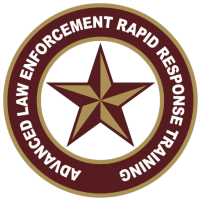NH RSA:650 & 630 Criminal Code
TITLE LXII
CRIMINAL CODE
CHAPTER 630
HOMICIDE
Section 630:1
630:1 Capital Murder. –
I. A person is guilty of capital murder if he knowingly causes the death of:
(a) A law enforcement officer or a judicial officer acting in the line of duty or when the death is caused as a consequence of or in retaliation for such person's actions in the line of duty;
(b) Another before, after, while engaged in the commission of, or while attempting to commit kidnapping as that offense is defined in RSA 633:1;
(c) Another by criminally soliciting a person to cause said death or after having been criminally solicited by another for his personal pecuniary gain;
(d) Another after being sentenced to life imprisonment without parole pursuant to RSA 630:1-a, III;
(e) Another before, after, while engaged in the commission of, or while attempting to commit aggravated felonious sexual assault as defined in RSA 632-A:2;
(f) Another before, after, while engaged in the commission of, or while attempting to commit an offense punishable under RSA 318-B:26, I(a) or (b); or
(g) Another, who is licensed or privileged to be within an occupied structure, or separately secured or occupied section thereof, before, after, or while in the commission of, or while attempting to commit, burglary as defined in RSA 635:1.
II. As used in this section, a "law enforcement officer'' is a sheriff or deputy sheriff of any county, a state police officer, a constable or police officer of any city or town, an official or employee of any prison, jail or corrections institution, a probation-parole officer, or a conservation officer.
II-a. As used in this section, a "judicial officer'' is a judge of a district, probate, superior or supreme court; an attorney employed by the department of justice or a municipal prosecutor's office; or a county attorney; or attorney employed by the county attorney.
III. A person convicted of a capital murder may be punished by death.
IV. As used in this section and RSA 630:1-a, 1-b, 2, 3 and 4, the meaning of "another'' does not include a foetus.
V. In no event shall any person under the age of 18 years at the time the offense was committed be culpable of a capital murder.
Source. 1971, 518:1. 1974, 34:1. 1977, 440:1; 588:41. 1988, 69:1, 2. 1990, 199:1. 1994, 128:1, 2. 2005, 35:1, eff. Jan. 1, 2006. 2011, 222:2, eff. July 1, 2011.
Section 630:1-a
630:1-a First Degree Murder. –
I. A person is guilty of murder in the first degree if he:
(a) Purposely causes the death of another; or
(b) Knowingly causes the death of:
(1) Another before, after, while engaged in the commission of, or while attempting to commit felonious sexual assault as defined in RSA 632-A:3;
(2) Another before, after, while engaged in the commission of, or while attempting to commit robbery or burglary while armed with a deadly weapon, the death being caused by the use of such weapon;
(3) Another in perpetrating or attempting to perpetrate arson as defined in RSA 634:1, I, II, or III;
(4) The president or president-elect or vice-president or vice-president-elect of the United States, the governor or governor-elect of New Hampshire or any state or any member or member-elect of the congress of the United States, or any candidate for such office after such candidate has been nominated at his party's primary, when such killing is motivated by knowledge of the foregoing capacity of the victim.
II. For the purpose of RSA 630:1-a, I(a), "purposely'' shall mean that the actor's conscious object is the death of another, and that his act or acts in furtherance of that object were deliberate and premeditated.
III. A person convicted of a murder in the first degree shall be sentenced to life imprisonment and shall not be eligible for parole at any time.
Source. 1974, 34:2. 1986, 132:3. 1990, 199:2, eff. Jan. 1, 1991.
Section 630:1-b
630:1-b Second Degree Murder. –
I. A person is guilty of murder in the second degree if:
(a) He knowingly causes the death of another; or
(b) He causes such death recklessly under circumstances manifesting an extreme indifference to the value of human life. Such recklessness and indifference are presumed if the actor causes the death by the use of a deadly weapon in the commission of, or in an attempt to commit, or in immediate flight after committing or attempting to commit any class A felony.
II. Murder in the second degree shall be punishable by imprisonment for life or for such term as the court may order.
Source. 1974, 34:2, eff. April 15, 1974.
Section 630:2
630:2 Manslaughter. –
I. A person is guilty of manslaughter when he causes the death of another:
(a) Under the influence of extreme mental or emotional disturbance caused by extreme provocation but which would otherwise constitute murder; or
(b) Recklessly.
II. Manslaughter shall be punishable by imprisonment for a term of not more than 30 years.
III. In addition to any other penalty imposed, if the death of another person resulted from the driving of a motor vehicle, the court may revoke the license or driving privilege of the convicted person indefinitely.
Source. 1971, 518:1. 1974, 34:3. 1979, 126:4. 2000, 318:1, eff. June 21, 2000.
Section 630:3
630:3 Negligent Homicide. –
I. A person is guilty of a class B felony when he causes the death of another negligently.
II. A person is guilty of a class A felony when in consequence of being under the influence of intoxicating liquor or a controlled drug or any combination of intoxicating liquor and controlled drug while operating a propelled vehicle, as defined in RSA 637:9, III or a boat as defined in RSA 265-A:1, II, he or she causes the death of another.
III. In addition to any other penalty imposed, if the death of another person resulted from the negligent driving of a motor vehicle, the court may revoke the license or driving privilege of the convicted person for up to 7 years. In cases where the person is convicted under paragraph II, the court shall revoke the license or driving privilege of the convicted person indefinitely and the person shall not petition for eligibility to reapply for a driver's license for at least 7 years. In a case in which alcohol was involved, the court may also require that the convicted person shall not have a license to drive reinstated until after the division of motor vehicles receives certification of installation of an ignition interlock device as described in RSA 265-A:36, which shall remain in place for a period not to exceed 5 years.
Source. 1971, 518:1. 1977, 588:40. 1985, 290:2. 1989, 415:2. 1992, 257:10. 1993, 272:2. 2000, 318:2; 287:4. 2006, 260:32, eff. Jan. 1, 2007.
Section 630:4
630:4 Causing or Aiding Suicide. –
I. A person is guilty of causing or aiding suicide if he purposely aids or solicits another to commit suicide.
II. Causing or aiding suicide is a class B felony if the actor's conduct causes such suicide or an attempted suicide. Otherwise it is a misdemeanor.
Source. 1971, 518:1, eff. Nov. 1, 1973.
Section 630:5
630:5 Procedure in Capital Murder. –
I. Whenever the state intends to seek the sentence of death for the offense of capital murder, the attorney for the state, before trial or acceptance by the court of a plea of guilty, shall file with the court and serve upon the defendant, a notice:
(a) That the state in the event of conviction will seek the sentence of death; and
(b) Setting forth the aggravating factors enumerated in paragraph VII of this section and any other aggravating factors which the state will seek to prove as the basis for the death penalty.
The court may permit the attorney for the state to amend this notice for good cause shown. Any such amended notice shall be served upon the defendant as provided in this section.
II. When the attorney for the state has filed a notice as required under paragraph I and the defendant is found guilty of or pleads guilty to the offense of capital murder, the judge who presided at the trial or before whom the guilty plea was entered, or any other judge if the judge who presided at the trial or before whom the guilty plea was entered is unavailable, shall conduct a separate sentencing hearing to determine the punishment to be imposed. The hearing shall be conducted:
(a) Before the jury which determined the defendant's guilt;
(b) Before a jury impaneled for the purpose of the hearing if:
(1) the defendant was convicted upon a plea of guilty; or
(2) the jury which determined the defendant's guilt has been discharged for good cause; or
(3) after initial imposition of a sentence under this section, redetermination of the sentence under this section is necessary.
A jury impaneled under subparagraph (b) shall consist of 12 members, unless at any time before the conclusion of the hearing, the parties stipulate with the approval of the court that it shall consist of any number less than 12.
III. When a defendant is found guilty of or pleads guilty to the offense of capital murder, no presentence report shall be prepared. In the sentencing hearing, information may be presented as to matters relating to any of the aggravating or mitigating factors set forth in paragraphs VI and VII, or any other mitigating factor or any other aggravating factor for which notice has been provided under subparagraph I(b). Where information is presented relating to any of the aggravating factors set forth in paragraph VII, information may be presented relating to any other aggravating factor for which notice has been provided under subparagraph I(b). Information presented may include the trial transcript and exhibits if the hearing is held before a jury or judge not present during the trial, or at the trial judge's discretion. Any other information relevant to such mitigating or aggravating factors may be presented by either the state or the defendant, regardless of its admissibility under the rules governing admission of evidence at criminal trials, except that information may be excluded if its probative value is substantially outweighed by the danger of unfair prejudice, confusion of the issues, or misleading the jury. The state and the defendant shall be permitted to rebut any information received at the hearing and shall be given fair opportunity to present argument as to the adequacy of the information to establish the existence of any of the aggravating or mitigating factors and as to appropriateness in that case of imposing a sentence of death. The state shall open and the defendant shall conclude the argument to the jury. The burden of establishing the existence of any aggravating factor is on the state, and is not satisfied unless established beyond a reasonable doubt. The burden of establishing the existence of any mitigating factor is on the defendant, and is not satisfied unless established by a preponderance of the evidence.
IV. The jury shall consider all the information received during the hearing. It shall return special findings identifying any aggravating factors set forth in paragraph VII, which are found to exist. If one of the aggravating factors set forth in subparagraph VII(a) and another of the aggravating factors set forth in subparagraphs VII(b)-(j) is found to exist, a special finding identifying any other aggravating factor for which notice has been provided under subparagraph I(b) may be returned. A finding with respect to a mitigating factor may be made by one or more of the members of the jury, and any member of the jury who finds the existence of a mitigating factor may consider such a factor established for purposes of this section, regardless of the number of jurors who concur that the factor has been established. A finding with respect to any aggravating factor must be unanimous. If an aggravating factor set forth in subparagraph VII(a) is not found to exist or an aggravating factor set forth in subparagraph VII(a) is found to exist but no other aggravating factor set forth in paragraph VII is found to exist, the court shall impose a sentence of life imprisonment without possibility of parole. If an aggravating factor set forth in subparagraph VII(a) and one or more of the aggravating factors set forth in subparagraph VII (b)-(j) are found to exist, the jury shall then consider whether the aggravating factors found to exist sufficiently outweigh any mitigating factor or factors found to exist, or in the absence of mitigating factors, whether the aggravating factors are themselves sufficient to justify a sentence of death. Based upon this consideration, if the jury concludes that the aggravating factors outweigh the mitigating factors or that the aggravating factors, in the absence of any mitigating factors, are themselves sufficient to justify a death sentence, the jury, by unanimous vote only, may recommend that a sentence of death be imposed rather than a sentence of life imprisonment without possibility of parole. The jury, regardless of its findings with respect to aggravating and mitigating factors, is never required to impose a death sentence and the jury shall be so instructed.
V. Upon the recommendation that the sentence of death be imposed, the court shall sentence the defendant to death. Otherwise the court shall impose a sentence of life imprisonment without possibility of parole.
VI. In determining whether a sentence of death is to be imposed upon a defendant, the jury shall consider mitigating factors, including the following:
(a) The defendant's capacity to appreciate the wrongfulness of his conduct or to conform his conduct to the requirements of law was significantly impaired, regardless of whether the capacity was so impaired as to constitute a defense to the charge.
(b) The defendant was under unusual and substantial duress, regardless of whether the duress was of such a degree as to constitute a defense to the charge.
(c) The defendant is punishable as an accomplice (as defined in RSA 626:8) in the offense, which was committed by another, but the defendant's participation was relatively minor, regardless of whether the participation was so minor as to constitute a defense to the charge.
(d) The defendant was youthful, although not under the age of 18.
(e) The defendant did not have a significant prior criminal record.
(f) The defendant committed the offense under severe mental or emotional disturbance.
(g) Another defendant or defendants, equally culpable in the crime, will not be punished by death.
(h) The victim consented to the criminal conduct that resulted in the victim's death.
(i) Other factors in the defendant's background or character mitigate against imposition of the death sentence.
VII. If the defendant is found guilty of or pleads guilty to the offense of capital murder, the following aggravating factors are the only aggravating factors that shall be considered, unless notice of additional aggravating factors is provided under subparagraph I(b):
(a) The defendant:
(1) purposely killed the victim;
(2) purposely inflicted serious bodily injury which resulted in the death of the victim;
(3) purposely engaged in conduct which:
(A) the defendant knew would create a grave risk of death to a person, other than one of the participants in the offense; and
(B) resulted in the death of the victim.
(b) The defendant has been convicted of another state or federal offense resulting in the death of a person, for which a sentence of life imprisonment or a sentence of death was authorized by law.
(c) The defendant has previously been convicted of 2 or more state or federal offenses punishable by a term of imprisonment of more than one year, committed on different occasions, involving the infliction of, or attempted infliction of, serious bodily injury upon another person.
(d) The defendant has previously been convicted of 2 or more state or federal offenses punishable by a term of imprisonment of more than one year, committed on different occasions, involving the distribution of a controlled substance.
(e) In the commission of the offense of capital murder, the defendant knowingly created a grave risk of death to one or more persons in addition to the victims of the offense.
(f) The defendant committed the offense after substantial planning and premeditation.
(g) The victim was particularly vulnerable due to old age, youth, or infirmity.
(h) The defendant committed the offense in an especially heinous, cruel or depraved manner in that it involved torture or serious physical abuse to the victim.
(i) The murder was committed for pecuniary gain.
(j) The murder was committed for the purpose of avoiding or preventing a lawful arrest or effecting an escape from lawful custody.
VIII. If a person is convicted of the offense of capital murder and the court does not impose the penalty of death, the court shall impose a sentence of life imprisonment without possibility of parole.
IX. If the jury cannot agree on the punishment within a reasonable time, the judge shall impose the sentence of life imprisonment without possibility of parole. If the case is reversed on appeal because of error only in the presentence hearing, the new trial which may be ordered shall apply only to the issue of punishment.
X. In all cases of capital murder where the death penalty is imposed, the judgment of conviction and the sentence of death shall be subject to automatic review by the supreme court within 60 days after certification by the sentencing court of the entire record unless time is extended for an additional period not to exceed 30 days by the supreme court for good cause shown. Such review by the supreme court shall have priority over all other cases and shall be heard in accordance with rules adopted by said court.
XI. With regard to the sentence the supreme court shall determine:
(a) Whether the sentence of death was imposed under the influence of passion, prejudice or any other arbitrary factor; and
(b) Whether the evidence supports the jury's finding of an aggravating circumstance, as authorized by law; and
(c) Whether the sentence of death is excessive or disproportionate to the penalty imposed in similar cases, considering both the crime and the defendant.
XII. In addition to its authority regarding correction of errors, the court, with regard to review of death sentences, shall be authorized to:
(a) Affirm the sentence of death; or
(b) Set the sentence aside and remand the case for resentencing.
XIII. When the penalty of death is imposed, the sentence shall be that the defendant be imprisoned in the state prison at Concord until the day appointed for his execution, which shall not be within one year from the day sentence is passed. The punishment of death shall be inflicted by continuous, intravenous administration of a lethal quantity of an ultrashort-acting barbiturate in combination with a chemical paralytic agent until death is pronounced by a licensed physician according to accepted standards of medical practice.
XIV. The commissioner of corrections or his designee shall determine the substance or substances to be used and the procedures to be used in any execution, provided, however, that if for any reason the commissioner finds it to be impractical to carry out the punishment of death by administration of the required lethal substance or substances, the sentence of death may be carried out by hanging under the provisions of law for the death penalty by hanging in effect on December 31, 1986.
XV. An execution carried out by lethal injection shall be performed by a person selected by the commissioner of the department of corrections and trained to administer the injection. The person administering the injection need not be a physician, registered nurse, or licensed practical nurse, licensed or registered under the laws of this or any other state.
XVI. The infliction of the punishment of death by administration of the required lethal substance or substances in the manner required by this section shall not be construed to be the practice of medicine, and any pharmacist or pharmaceutical supplier is authorized to dispense drugs to the commissioner of corrections or his designee, without prescription, for carrying out the provisions of this section, notwithstanding any other provision of law.
XVII. The governor and council or their designee shall determine the time of performing such execution and shall be responsible for providing facilities for the implementation thereof. In no event shall a sentence of death be carried out upon a pregnant woman or a person for an offense committed while a minor.
Source. 1974, 34:10. 1977, 440:2. 1986, 82:1. 1990, 199:3, eff. Jan. 1, 1991.
Section 630:6
630:6 Place; Witnesses. – The punishment of death shall be inflicted within the walls or yard of the state prison. The sheriff of the county in which the person was convicted, and 2 of his deputies, shall be present, unless prevented by unavoidable casualty. He shall request the presence of the attorney general or county attorney, clerk of the court and a surgeon, and may admit other reputable citizens not exceeding 12, the relations of the convict, his counsel and such priest or clergyman as he may desire, and no others.
Source. 1974, 34:10, eff. April 15, 1974.
TITLE LXII
CRIMINAL CODE
CHAPTER 650-C
NEGLIGENT STORAGE OF FIREARMS
Section 650-C:1
650-C:1 Negligent Storage of Firearms. –
I. Nothing in this section shall be construed to reduce or limit any existing right to purchase and own firearms or ammunition, or both, or to provide authority to any state or local agency to infringe upon the privacy of any family, home or business except by lawful warrant.
II. As used in this section, "child,'' "juvenile'' or "youth'' shall mean any person under 16 years of age.
III. Any person who stores or leaves on premises under that person's control a loaded firearm, and who knows or reasonably should know that a child is likely to gain access to the firearm without the permission of the child's parent or guardian, is guilty of a violation if a child gains access to a firearm and:
(a) The firearm is used in a reckless or threatening manner;
(b) The firearm is used during the commission of any misdemeanor or felony; or
(c) The firearm is negligently or recklessly discharged.
IV. Any person who violates paragraph III shall be fined not more than $1,000.
V. This section shall not apply whenever any of the following occurs:
(a) The child has completed firearm safety instructions by a certified firearms safety instructor or has successfully completed a certified hunter safety course.
(b) The firearm is kept secured in a locked box, gun safe, or other secure locked space, or in a location which a reasonable person would believe to be secure, or is secured with a trigger lock or similar device that prevents the firearm from discharging.
(c) The firearm is carried on the person or within such a close proximity thereto so that the individual can readily retrieve and use the firearm as if carried on the person.
(d) The child obtains or obtains and discharges the firearm in a lawful act of self-defense or defense of another person.
(e) The person who keeps a loaded firearm on any premises which are under such person's custody or control has no reasonable expectation, based on objective facts and circumstances, that a child is likely to be present on the premises.
(f) The child obtains the firearm as a result of an illegal entry of any premises by any person or an illegal taking of the firearm from the premises of the owner without permission of the owner.
VI. A parent or guardian of a child who is injured or who dies of an accidental shooting shall be prosecuted under this section only in those instances in which the parent or guardian behaved in a grossly negligent manner.
VII. Licensees shall conspicuously post at each purchase counter the following warning in bold type not less than one inch in height: "IT IS IMPORTANT THAT THE OWNER OF A FIREARM SEEK FIREARM SAFETY INSTRUCTIONS FROM A CERTIFIED FIREARMS INSTRUCTOR AND KEEP FIREARMS SECURED FROM UNAUTHORIZED USE.'' A licensee failing to display this warning to the purchaser of a firearm shall be guilty of a violation.
Source. 2000, 267:1, eff. Jan. 1, 2001.


























